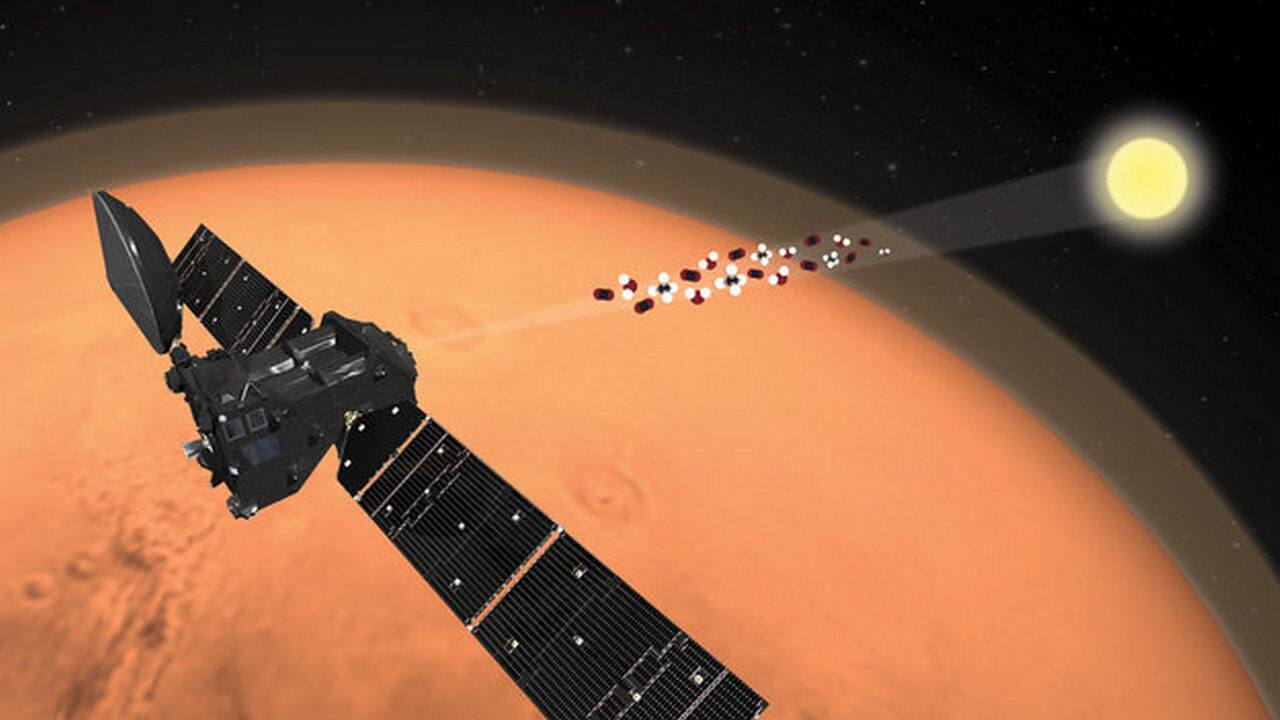The methane mystery of Mars might have finally been solved. Curiosity, that lonely rover on Mars, has been detecting signs of methane regularly, however, the ExoMars Trace Gas Orbiter, would pick up significantly lesser amounts of it than the rover measured. For instance, once Curiosity measured average methane concentrations of 0.41 parts per billion inside Gale crater, a 154-meter crater at the equator of Mars. And it took everyone by surprise when the European Space Agency’s ExoMars Trace Gas Orbiter flew over the crater and found no methane at all. The amount of methane in the air might have been too tiny for the orbiter to sniff it out. A team of researchers from
York University might have solved the reason for the difference in measurement. Their theory has been published in the journal
Geophysical Research Letters. [caption id=“attachment_4501715” align=“alignnone” width=“1280”] The Curiosity rover on Mars in early June 2018. Image courtesy: NASA[/caption] Curiosity roves around in the crater and in the past has indicated that there might be life on Mars because of the amount of methane present in the air. Methane is a key indicator of processes in the subsurface, such as water-rock reactions, decomposition of clathrates or ancient accumulated meteoritic organics, and even current or past microbial activity. Researchers used data from the orbiter and rover and found that during the day, small amounts of methane are released into the atmosphere. It gets diluted and mixed due to convection. This leads to overall low levels of methane in the atmosphere. Convection is a heat transfer that takes place when a fluid, such as air or a liquid, is heated and then travels away from the heat source. It carries with it the thermal energy. The fluid above a hot surface expands, becomes less dense, and rises. During the night, convection decreases and allows for the buildup of methane on the surface. This build-up is what Curiosity measures. In the morning, convection increase and the cycle continues. [caption id=“attachment_7288281” align=“alignnone” width=“1280”]
 Artist illustration of the Exo Mars Trace Gas Orbiter analysing the Martian atmosphere. Image credit: ESA[/caption] John Moores, head author of the study
said in a statement, “Our study suggests that some of the differences between measurements of methane in the martian atmosphere could be the result of methane concentrations changing over the course of each day, if a small amount of methane continuously seeps from the subsurface.”
He added, “It turns out that the fact that each spacecraft measures at a different time of the day and in different parts of the atmosphere are the keys to solving the apparent discrepancy.” Researchers were able to calculate the amount of methane that seeps out of the crater in one martian day – 2.8 kg. They also calculated that only 27,000 square kilometres of Mars’ surface should emit methane at a constant rate. That’s an area equivalent to 1½ Gale craters. In an interview with
Science News, Moors said, “It’s difficult to imagine that only Gale emits methane. Either Gale is even more special than we imagine, or there’s something we’re missing in the chemistry of the atmosphere.”
Artist illustration of the Exo Mars Trace Gas Orbiter analysing the Martian atmosphere. Image credit: ESA[/caption] John Moores, head author of the study
said in a statement, “Our study suggests that some of the differences between measurements of methane in the martian atmosphere could be the result of methane concentrations changing over the course of each day, if a small amount of methane continuously seeps from the subsurface.”
He added, “It turns out that the fact that each spacecraft measures at a different time of the day and in different parts of the atmosphere are the keys to solving the apparent discrepancy.” Researchers were able to calculate the amount of methane that seeps out of the crater in one martian day – 2.8 kg. They also calculated that only 27,000 square kilometres of Mars’ surface should emit methane at a constant rate. That’s an area equivalent to 1½ Gale craters. In an interview with
Science News, Moors said, “It’s difficult to imagine that only Gale emits methane. Either Gale is even more special than we imagine, or there’s something we’re missing in the chemistry of the atmosphere.”
Researchers were able to calculate that 2.8 kg of Methane is emitted per day from Gale Crater.
Advertisement
End of Article


)
)
)
)
)
)
)
)
)



